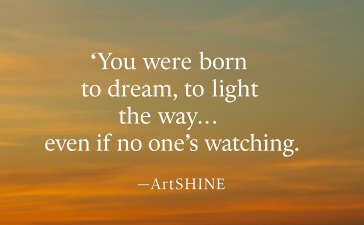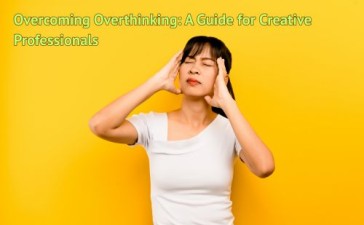In today’s rapidly evolving creative landscape, resilience has emerged as perhaps the most valuable trait for artists and designers. The ability to adapt, persevere, and reinvent oneself in the face of challenges isn’t just helpful—it’s essential for survival and success in creative fields. For artists, surface designers, graphic designers, and photographers, resilience manifests in unique ways that both shape their work and sustain their careers.
The Necessity of Resilience in Creative Fields
Creative professionals face distinctive challenges: market fluctuations, technological disruptions, fierce competition, and the constant pressure to innovate. The COVID-19 pandemic further emphasized this need for adaptability, as artists and designers worldwide saw traditional opportunities vanish overnight while new digital avenues emerged. Those who thrived didn’t simply survive by chance—they demonstrated remarkable resilience.
Resilience in creative industries goes beyond mere persistence. It involves developing a growth mindset, embracing failure as education, diversifying skills and income streams, building supportive networks, and maintaining both creative vision and practical flexibility.
Artists: Finding Strength in Vulnerability
Painter Frida Kahlo exemplifies creative resilience. After suffering debilitating injuries in a bus accident, Kahlo transformed her physical and emotional pain into powerful self-portraits that continue to resonate globally. Her ability to channel personal trauma into artistic expression demonstrates how resilience can become a creative catalyst.
Contemporary artist Yayoi Kusama has overcome decades of mental health challenges and institutional barriers to become one of the world’s most celebrated artists. Her persistence through periods of obscurity and her unwavering commitment to her distinctive vision—characterized by her iconic polka dots—shows how creative resilience can span a lifetime.
Surface Designers: Adapting to Market Evolution
The field of surface design has undergone dramatic transformations with the rise of digital printing technologies and global manufacturing. Designer Marimekko found enduring success by staying true to bold, distinctive patterns while continuously adapting to new production methods and changing market demands.
Surface designer Lotta Jansdotter built resilience into her business model by diversifying her creative output—from textiles to homewares, books, and workshops. This multifaceted approach allowed her to weather industry changes and economic downturns by never relying on a single revenue stream.
Graphic Designers: Technological Resilience
Paula Scher, a pioneering graphic designer at Pentagram, has remained relevant through multiple technological revolutions. Beginning her career in the analog era, Scher continuously evolved her skills while maintaining her distinctive typographic voice. Her willingness to embrace new tools while retaining core design principles exemplifies technological resilience.
Jessica Walsh demonstrated remarkable resilience by taking a significant career risk—leaving a prestigious position to establish her own studio, &Walsh. Her bold move, coupled with her distinctive creative approach and business acumen, allowed her to build a thriving practice despite industry challenges.
Photographers: Adapting to Industry Disruption
Few creative fields have experienced more disruption than photography. When digital technology transformed the industry, photographer Annie Leibovitz didn’t resist the change but instead mastered new tools while maintaining her signature lighting and compositional style. Her ability to evolve technically while preserving artistic identity demonstrates the essence of creative resilience.
Documentary photographer Sebastião Salgado shows another form of resilience through his commitment to long-term projects despite financial and logistical challenges. His decades-long documentation of environmental issues required not just artistic vision but remarkable perseverance in difficult conditions.
Building Resilience: Practical Strategies
Creative professionals across disciplines have developed effective strategies for building resilience:
– Diversification: Successful creatives rarely rely on a single skill, client, or revenue stream. By developing complementary abilities and varied income sources, they create stability amid uncertainty.
– Community Building: Strong professional networks provide emotional support, collaborative opportunities, and business referrals during challenging times.
– Continuous Learning: The most resilient creatives commit to ongoing education, ensuring they remain relevant as technologies and market demands evolve.
– Mindful Business Practices: Strategic pricing, careful contract negotiation, and financial planning help creative professionals weather economic fluctuations.
– Creative Consistency: Maintaining a recognizable style or approach while exploring new territories helps build a sustainable creative identity.
The Future of Creative Resilience
As artificial intelligence and automation transform creative industries, resilience will become even more crucial. The most successful artists and designers will be those who leverage new technologies while emphasizing distinctly human creative qualities—emotional resonance, cultural context, and personal narrative.
Climate change presents another challenge requiring creative resilience, as sustainable practices become increasingly important in design and production processes. Forward-thinking creatives are already adapting their materials and methods to address environmental concerns.
Conclusion
Resilience isn’t simply about surviving challenges—it’s about transforming them into opportunities for growth and innovation. The most enduring creative professionals understand that setbacks often lead to breakthroughs when approached with flexibility and perseverance. By embracing change while maintaining core values and vision, artists, surface designers, graphic designers, and photographers can build careers that not only withstand adversity but thrive because of it.
💥 Want to learn more?
Find out more:
👉 Launch Pad + Accelerator Expressions of Interest
👉 Selling and Licensing Your Art & Designs Around the World with ArtSHINE
We’re here to help you take action—just like we’ve helped thousands of entrepreneurs, business owners, and creative professionals around the globe.
✨ Want regular inspiration, mindset tips, and art licensing opportunities sent straight to your inbox?
Sign up for the ArtSHINE Weekly Newsletter and stay connected to a creative community that’s growing, thriving, and shining together.
Now is the time to let your passion SHINE.
Now is the time to Make Tomorrow Today!
To your success,
Vinh Van Lam & Stuart Horrex
Cofounders, ArtSHINE.com
Professional Creative Transition Coach
Helping accomplished professionals rediscover their creative potential
Tags:Resilience





